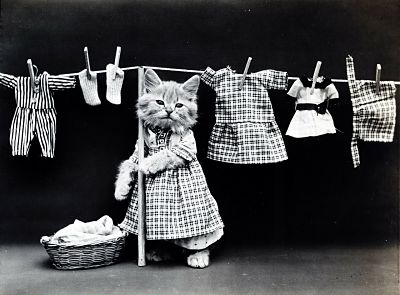Getting Children on Board
★★★★

“Come, children. Let’s get those four loads of laundry folded and put away,” said Mother.
“Sure, Mom, I’m glad to help. Can I fold the biggest basket?” said no child ever.
There is work to be done: assignments to be completed, places at which to arrive on time, cleaning to finish, smaller siblings to help, decisions to be made. How do adults get children on board? How do leaders kindle excitement and eager participation?
1. Offer a choice as often as possible.
Bedtime is coming, ready or not—but would you like to put on your pj’s first or brush your teeth first? Do you want to do your homework in Dad’s office or at the table? I have three chores that need to be done; who will take which one? Should we snap beans on the porch or at the kitchen table?
Offering simple choices creates forward motion and allows children to buy in. We are heading this direction: about that I am unmoved. But in how we work it out, and where, I can afford flexibility.
2. Allow ownership.
When children are given real responsibility, they tend to rise to the challenge. When we stand above them, micromanaging and correcting, they feel robbed of power to do the work we are requiring them to do. They start leaning on our power, or fighting it. When we give minimal-but-adequate direction and then step away, trusting them to do well and offering support only as needed, they are enabled to take personal ownership and do their best work. They may even find a better way to do it. (It may not look as it would if we were doing it. But hello—we’re not.)
3. Be enthusiastic and creative.
My energy as a leader communicates directly to the children in my care. Nobody gets super excited about those four baskets of laundry. But how about if we tell stories while we fold? Or listen to music? Or see if we can be done in twenty minutes? Or fold by colors—I do all the hot colors, you do the cool ones? Or pretend we are professional workers in a German laundromat, and use our best accents?
4. Build character, teamwork, and joy as you go.
No matter how enthusiastic adults are, children will balk at times. But this is character training. How do we respond when we are frustrated, when everyone else took the easy jobs, when the person in charge made a decision no one likes, or when the job is just too hard? If we never let our children fail, we never let them grow. We’re all working together here. How can you contribute, honey? How can I help you? We’re on the same team; let’s not ruin the joy for everyone else.
And then pour on the praise. Look what a good job you are doing! Wow, you are amazing!
5. Maximize natural rewards.
There are times for extra rewards—the ice cream cones or dollar bills—but often, participation can be its own reward. Work brings joy. Teamwork brings friendship. Cooperation brings a smile. When we clean a room, we get to live in its sparkle. When we cook or set the table, we eat good things. When we care for our animals, they like us and follow us around. When we help someone smaller and weaker, we feel satisfied to be a big helper. When we finish our work early, we get extra free time. When we try something new, we gain a skill.
Now we are bigger and wiser and stronger. The laundry is done! and we’re still on the same team.
Leave a Reply